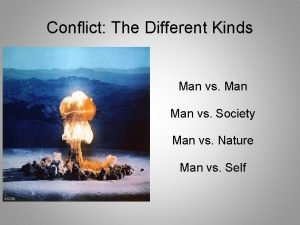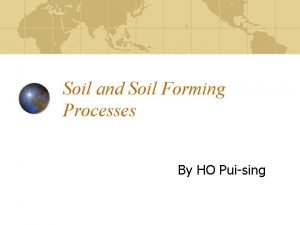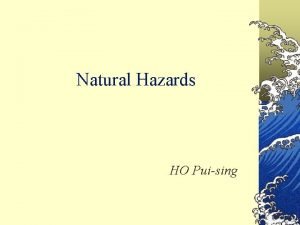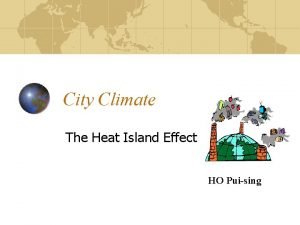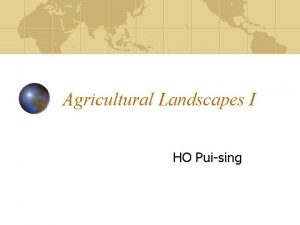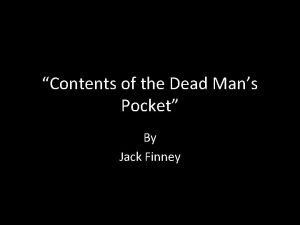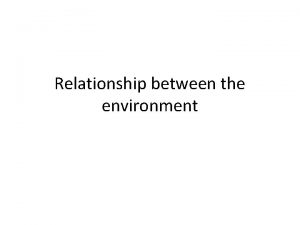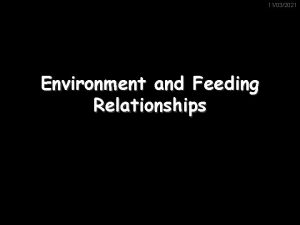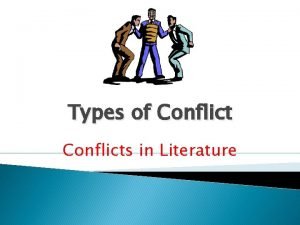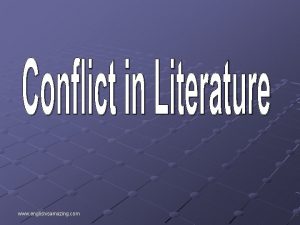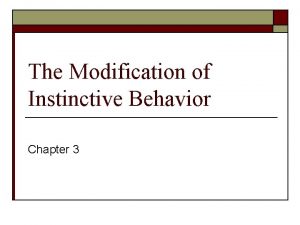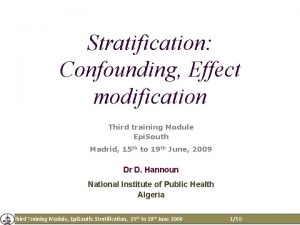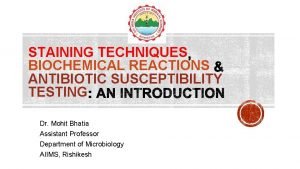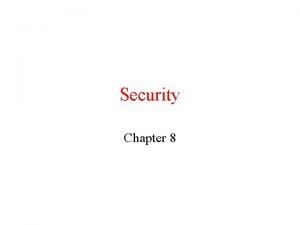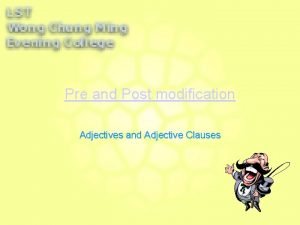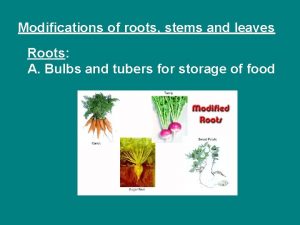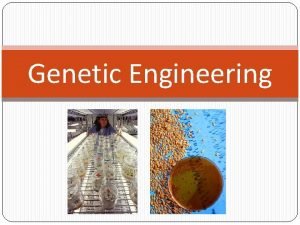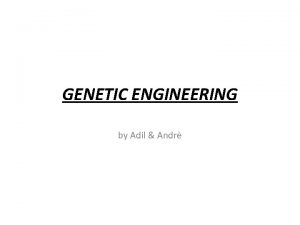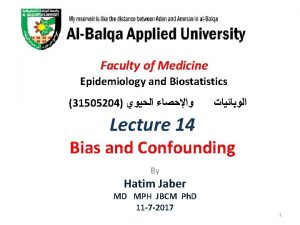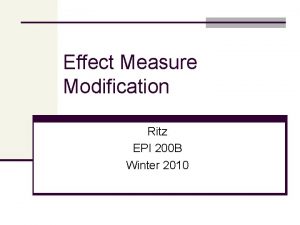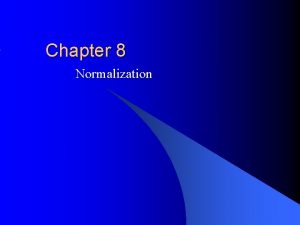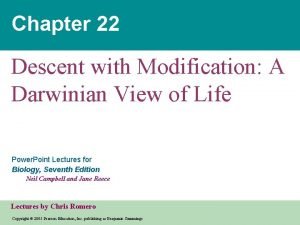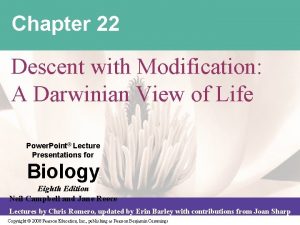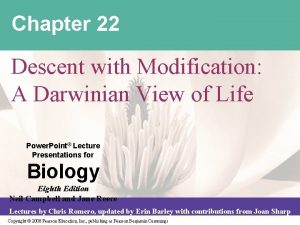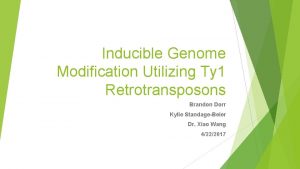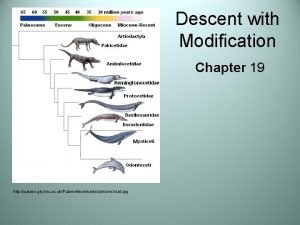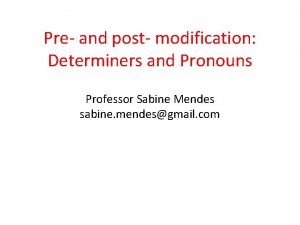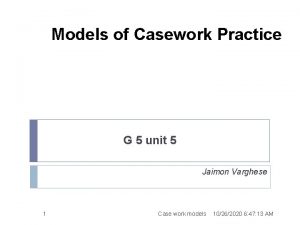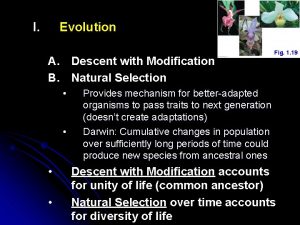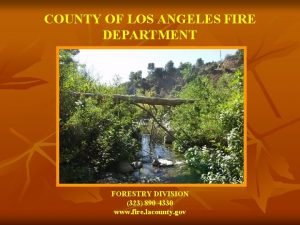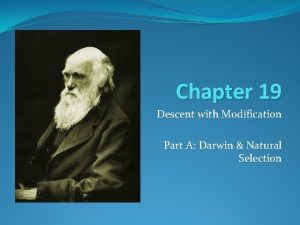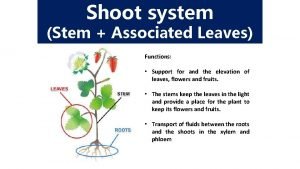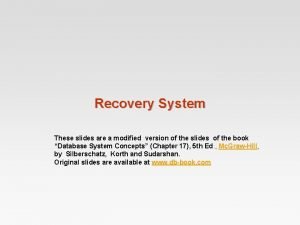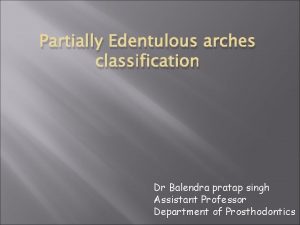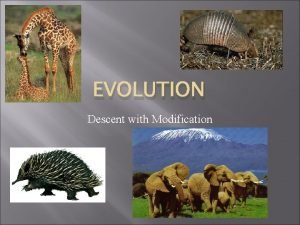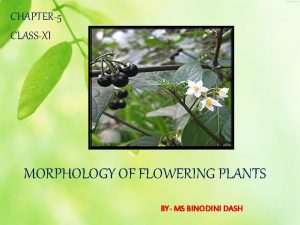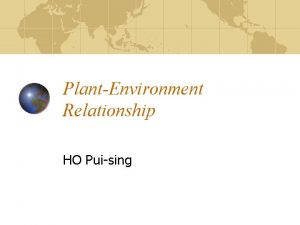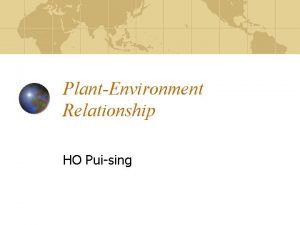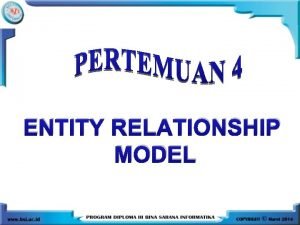Man Environment Relationship HO Puising Contents Modification of




















































































- Slides: 84

Man- Environment Relationship HO Pui-sing

Contents Modification of Landforms Modification of the Atmosphere Modification of Ecosystem Tropical Rain Forest Landscape Tropical Desert Landscape

Modification of Landforms Mining, Quarrying, Deforestation, introduce new plants and animals Direct affect on the shape of landforms: Excavating, reclaiming land… Deforestation for agriculture and urbanization

Deforestation Natural vegetation Regulator of natural erosion Protecting the ground from raindrop Absorbing runoff (Large infiltration capacity) Making the slope more cohesive Deforestation Small infiltration capacity, more surface runoff, soil erosion in upper courses, increase sedimentation and floods in lower courses

Deforestation – runoff and sediments Landuse type Average annual rainfall (cm) Average annual run-off (cm) Average annual sediment yield (ton/hectare) Cultivated 132 40 50 Pasture 129 38 36 Abandoned fields 129 18 0. 29 Depleted hardwoods 129 13 0. 22 Pine Plantations 137 2. 5 0. 045 Open land Forest Land

Urbanization

Modification of the Atmosphere Sources: Industrial Revolution Mining and quarrying Urbanization Farming Harmful effects: Health Pollution and Acid Rain Climate changes

Harmful effects - health Many pollutants are irritant to eyes Eg. Smoke, Ozone, Suspended particles… Dangerous to the respiratory system Eg. Lung Cancer

Harmful effects – Pollution Pollutants: Solid: Smoke, Total suspended particles (TSP) Liquid: Acid rain Gaseous: sulphur dioxide (SO 2), Carbon monoxide (CO), Oxides of nitrogen (NOx – NO, NO 2)…. .

Harmful effects – climate changes Change the composition of air Gases N 2 O 2 Ar CO 2 % 78. 084 20. 947 0. 934 0. 03 Increase CO 2 Level (290 ppm to 340 ppm)

Harmful effects – Climate changes CO 2 from fossil fuels combustion CO 2 level increase, O 2 level decrease CO 2 is greenhouse gas Affect global radiation and heat balances Global temperature increase Alter the rate of evapo-transpiration Urbanization Alter the surface nature & industrial activities Heat Island effect (micro-climate)

Modification of Ecosystem Agriculture, Industries activities and Urbanization Simplified ecosystems Disrupted nutrient cycling Introduced alien species Eliminated original species pollution

Simplified ecosystem Monoculture High energy and materials (fertilizers) input Destroys major nutrient reservoirs (biomass and soil) Eutrophication – excess fertilizers added Elimination species Conscious - hunting Unconscious – disruption of habitats Decline efficiency – ecological imbalance

Tropical Rain Forest Landscape Where is Shifting Agriculture Practiced Characteristics of Shifting Cultivation The Relationship between SC and Env. Opportunities and constraints posed by Env. Response to the opportunities and constraints Farm Cycle Conclusion Shifting Cultivation is Ecologically Destructive

Distribution of Shifting cultivation Congo Basin Amazon Basin South-east Asia

Characteristics of Shifting Cultivation Primitive peoples’ cultivation method Subsistence farming with tuberous plants “Slash and Burn” for clearing forest Low man-land ratio Primitive method with simple hand tools Relatively low yields from crops supplementary with gathering No fertilizers and pesticides added Periodic migration leaving the clearing (2 -3 years) Extensive farming

Relationship between SC and Env. Tropical climate – high temp. and high rainfall Rapid and high level nutrition cycle Heavy leaching, Rapid chemical processes and bacterial activities litter and humus are quickly decompose infertile soil Soil fertility maintain by efficient nutrient cycle and most nutrients are locked in biomass

Relationship between SC and Env. Shifting cultivator disrupts an ecosystem equilibrium SC take the advantage of transient availability of nitrogen and carbon (nutrients) Destroyed the nutrient cycle by clearing Depleting effects are accelerated and soil becomes almost completely inorganic Oxides layer of the soil expose to air becomes laterite Lateritic crusts are hard, compact and very difficult to cultivate and increase surface runoff and soil erosion Exposure to air, loss of humus increase evaporation, raindrop effect and decrease field capacity soil structure change

Farm cycle – Response to the Env. Selecting site Clearing forest Burning off the dead materials Planting crops Weeding and harvesting crops Abandoning the clearing

Selecting site Fertile soil and ease of clearing Primeval forest fertile soil Few undergrowth under the dense canopy ease to clear Some tribes prefer secondary forest (former site)

Clearing forest for having site for cultivation Time: end of rainy season to the beginning of dry season Lianas, undergrowth and sapling are hacked down. Trees are cut above buttress roots. The largest trees may be spared for against soil erosion and they are hard to cut down The dead vegetation is piled into heaps and dry out for one or two months.



Burning off the dead vegetation Late dry season will set on a fire to burn them off. Fire is the easiest way to clear the site. The largest trees left for shading for young plants Advantages of burning: Ashes are also fertility for soil Potash, phosphates and decrease in soil acidity. Break up the hard lateritic surface Dry out the clay soil and develop large cracks into which the ashes accumulate Burning debris helps to reduce runoff and soil erosion.

Planting crops Planting is usually timed to take full advantage of rainy season Mixed cropping Advantage of mixed cropping maximum return and minimum effort. Mixture of crops prevent weeds growth. Different growth habits, root systems, demand on soil nutrient. Insurance against the failure of any one crop. Practice crop rotation for more than one growing season


Weeding and Harvesting Minimal weeding Almost no attention until harvest Too much cultivation increases soil erosion

Abandon and migration 1 to 3 years, yields begin decline Humus and ashes are thoroughly used and leach out without any replenishment Weeds and undergrowth encroach seriously Abandon the clearing and find another site for clearing and cropping.


Abandon and migration – cont’d Some tribes may plant tree crops (bananas and coconuts) before moving More primitive peoples build only temporary villages for always moving. The land will recover the fertility after a long period of time (about 20 years) Clearing and migration are conservational measure to restore fertility to depleted soils.


Conclusion Shitting cultivation is a response to the harsh environment. Subsistence farming with growing wide range of crops (tuberous plant) It is a miniaturized tropical forest ‘Slash and burn’ is a method to transfer the stored nutrients from biomass to soil. Short period of cultivation and long period of fallow no permanent damage to the environment

Conclusion – cont’d Effective means of using rain forest env. and minimize the problems (soil erosion, soil fertility deterioration and vegetation degradation) Pre-requisite: primitive technology, small population and sparse distribution.

Case study Note p. 14 -16 “Shifting Cultivation is ecologically destructive” Main points (destroy old balance between man and nature) Population increase demand of food increase Introduce commercial concept – growing tree crops (rubber, coffee, …. )for sell Introduce European agricultural techniques and urban development More lands for farming Field works are left to women Shorten the fallow (abandon) period Serious soil depletion and soil erosion

Impacts of Shifting Cultivation The atmosphere The hydrosphere Soil Vegetation and animals

The Atmosphere The global climate TRF is a natural filter It absorb CO 2 and produce O 2 through photosynthesis Clearance of TRF, increase CO 2 (greenhouse gas) content and lead to temperature increase and Affect water budget: rainfall changes (increase or decrease)

Atmosphere – cont’d The micro-climate Normal Forest floor is moist, shade, temperature is relatively low (32 o. C), wind cannot penetrate and high humidity. Clearance Sunshine reaches the floor, temperature and soil temp. increase (65 o. C), increase evaporation, decrease relative humidity and increase wind speed

The hydrosphere Reduce interception and organic debris supply Decrease infiltration capacity and increase surface runoff River flow increase (volume, speed and silt load) Water chemistry (increase solution load) Shape and size of river channels (flooding and sedimentation)

Soil Increase leaching Desilication and accumulation of sesquioxides Laterization Oxisol expose to air and through desiccation to become harden layer – latertie. Mechanism to check laterization in TRF • Trees supply plenty of organic matter • Slows down evaporation from soil

Soil – cont’d Break down the nutrient cycle Release large amount of nutrients from biomass to soil by burning Large amount of nutrients will be transform to ash which is loss by volatilization, wind deflation and water erosion. Increase temperature lead to increase rate of decomposition and no humus can be accumulated Runoff washes away the available nutrients Soil become exhaustion and lead to soil erosion

Soil – cont’d Soil erosion Ground become no protection for deforestation No interception and rain drops directly on ground surface (rainsplash) to destroy soil structure Decrease infiltration capacity and increase surface runoff Rills, gullies to badland Increase river loads and lead to sedimentation in lower course and causes reservoir silting, obstruct navigate, poor irrigation and flooding.

Vegetation and animals Rain forest was cleared and abandoned by man, secondary forest occurs. The floristic and structure are very different from the virgin forest The different depends on Availability of seeds of primary forest trees Length of cultivation before abandonment

Primary Forest

Secondary Forest

Vegetation and animals – cont’d The different between secondary forest and primary forest Secondary forest is lower and consists of trees of smaller average dimensions. Very young secondary forest is remarkably regular and uniform structure (abundance of small climbers and young saplings) Poorer in species (one or a small number) Secondary forest vegetation is light demanding and intolerant of shade. • Growing very fast • Short-live, mature and reproduce early • Wood has a soft texture and low density

Vegetation and animals – cont’d Disturbing the ecological system Rainforest lost: West Africa – 72%, South east-Asia: 63. 5% TRF is the centre of the plant evolution of the world. Deforestation may change the future course of plant evolution. Knowledge of plant physiology and ecology has been gained from studies in tropics. Forest to agricultural, complex food web to simple food chain, encourage certain animals and insects species to multiply Shifting agriculture becomes ecologically destructive.

Desert Landscape Natural Environment Nomadic Pastoralism Problem of Over-grazing Impacts of Over-grazing Remedies to Desertification

Global distribution of desert

Natural Environment Annual rainfall less than 250 mm Rainfall is insufficient Erratic Unpredictable Vegetation is sparse and very localized It is a harsh Environment It is impossible for arable farming and very difficult to support domestic animals

Desert Environment




Human Activities in Desert-dwellers engage many activities Hunting and gathering Nomadic herding Oasis cultivation Mining Oil industry Tourism Others: testing missiles, bombs and explosives

Pastoralism The practice of keeping animals for meat and milk, fibre and hides It is a traditional form of subsistence farming Tribal people wandering in semi-arid land in search for grazing land Activity of nomads shifts from one section of land to another Fixed patterns of seasonal (rainfall) movement By this grazing cycle, soil structure, soil fertility and carrying capacity of desert environment can be conserved





Case study 1: Xinjiang Location: Junggar Pendi Rainfall: 150 -300 mm Herds: sheep, cattle, horse, camels Types of nomadic grazing Aimless roaming (Kirghiz): ban by government policy Transhumance (Tian shan): encampments for summer (mountain) and winter (pediplain) pastures.


Case study 2: Sahara Two types of Nomadic Pastoralism True Nomadic Pastoralism Semi-nomads

True Nomadic Pastoralism Tribes have to continuous on the move Scouts look for fresh pasture and animals are driven there immediately. They move once a month usually in constant routes They are in small family groups with minimum baggage for easy to move. Movements Within the Sahara (Western Sahara) Out of the Sahara during the driest season (Northern Sahara): Summer in mountains and back to Sahara in winter

Semi-nomads Southern hills of the Mountain Atlas North and the coastal fringe of Libya Southern perimeter of the desert They drive their flocks according to seasons and rain. They also carry out subsistence farming and grow barley, wheat and fruits. Ban for government policy.

Conclusion For thousand of years, nomadic Pastoralism is a flexible and efficient form of livelihood in deserts. It is well adapted to the harsh environment with low carrying capacity. Equilibrium can be maintained by this rotating cycle. Soil and vegetation can be regenerated and recovered. It is one of the best adaptation to harsh conditions. Pre-requisite: limited human and animal population which are not excess the carrying capacity.

The problem of Over-grazing Mobility, shorter life expectancies, low human and animal populations that make ecological equilibrium possible. Grazing system could only support a small population. This equilibrium maintain thousands of year until last century. Eg. Semi-arid area increase 50% during 19 th century in South Africa

Reasons of over-grazing Man-herds Ratio: Cattle (1: 15), Camel (1: 20), Sheep (1: 30) Traditional Culture: Number of herds is a sign of wealth. Population increase in six-fold since the beginning of 20 th century in north Africa Population explosion for following reasons: Improving medical services • decrease death rate International aid programmes • reduce level of starvation by supplying food from outside Improving law enforcement and tribal settling programmes • reduce number of deaths caused by warfare

Reasons of over-grazing – cont’d Problems from population increase: Expand their herd size for living Good climate - increase herd size Dryness climate – unwilling to reduce the herd size Good climate return – restock herd size more quickly. Nomads are forced to go back to the fallow graze land more frequently, shorter fallow period, shorter recover period (both soil and vegetation). Nomads are forced to expand into the marginal semi-arid area (desertification)

Reasons of over-grazing – cont’d Government Policy Many independence countries establish after 1950’s in the world and political boundaries form Restricted movement of people and animals for population control, revenue collection and resources exploitation. Nomads cannot follow the rain pattern to move freely Tribesmen are encouraged to settle and cultivate More herds are concentrated on a smaller area, that means greater concentration of grazing pressure on poor vegetation and greater danger of overtrampling of soil by animals.

Reasons of overgrazing – cont’d Economic – Commercial grazing The success of commercial grazing in North America and Australia Many African countries develop commercial grazing. Increase herds size for sale. Pre-requisite: Water supply is the main point to the success of this industry.

Australia Savanna

Impacts of Over-grazing Desertification Destruction of vegetation Over-grazing excess the carrying capacity of pasture. Sheep – grazing down to root level Goat – destruction of trees and seedlings Large herds size – serve to destroy the plant cover Palatable species were replaced by non-palatable grasses or a loss of regeneration capacity, desiccation of land, destruction of soil structure and soil erosion

Impacts of Over-grazing – Desertification (cont’d) Destruction of soil Drill new wells to provide water for herds. Concentration of the livestock around fixed points. Vegetation in the surrounding areas was totally denuded. Severe trampling results in destruction of soil structure

Impacts of Over-grazing – Desertification (cont’d) Removal of vegetation cover Soil directly exposed to the desiccation effect of the sun and wind erosion. Soil erosion is irreversible and vegetation may be eliminated forever. Nomads are forced to migrate into less arid areas, and so the cycle of environmental degradation is repeated continuously and in a self-accelerating process - Desertification.

Desertification is the diminution or destruction of the biological potential of the land, and can lead ultimately to desert-like conditions. It is an aspect of the widespread deterioration of ecosystems, and has diminished or destroyed the biological potential, i. e. plant and animal production, for multiple use purposes at a time when increased productivity is needed to support growing populations in quest of development.

Impacts on desert climate Removal of vegetation Increase surface albedo leads to a decrease of absorbing in incoming radiation of the land surface. Increase in the radioactive cooling of the air. Air would sink to land surface to maintain thermal equilibrium by adiabatic compression; convection and rainfall would be suppressed. Lower rainfall lead to further decrease in



Impacts on desert climate – cont’d Removal of vegetation Decrease of a kind of bacteria which is a very efficient freezing / condensation nuclei. Reduce the probability of convective rainfall Increasing surface albedo and reducing freezing nuclei, all which intensifies desertification.

Remedies to Desertification Increase the production of meat by keeping camels instead of sheep, goats and cattle. Plant prickly pear as a source of animal fed. Transfer people to other areas or activities, forcing migration, providing education and control over the use of land water. Afforestation. Provide a green belt to stop the expansion of desert. Eg. Calophyllum inophyllum Use drip irrigation




 Man vs society definition literature
Man vs society definition literature Factors affecting soil formation
Factors affecting soil formation Puising
Puising Puising
Puising Puising
Puising Puising
Puising Puising
Puising Contents of a dead man's pocket conflict
Contents of a dead man's pocket conflict Content of a dead man's pocket
Content of a dead man's pocket External conflict in contents of the dead man's pocket
External conflict in contents of the dead man's pocket Contents of the dead man's pocket questions and answers
Contents of the dead man's pocket questions and answers Financial environment of business
Financial environment of business Micro market and macro environment
Micro market and macro environment Environment and feeding relationship grade 7
Environment and feeding relationship grade 7 What is the relationship between humans and the environment
What is the relationship between humans and the environment Relationship management vs relationship marketing
Relationship management vs relationship marketing Man as creator and destroyer of environment
Man as creator and destroyer of environment Risk assessment
Risk assessment Sin entered through one man
Sin entered through one man You live and learn
You live and learn Vatten tryck
Vatten tryck A hungry man is an angry man meaning and sentence
A hungry man is an angry man meaning and sentence Old man and new man
Old man and new man Trening og mensen
Trening og mensen Man vs society in the cask of amontillado
Man vs society in the cask of amontillado External conflict definition
External conflict definition Internal conflict definition literature
Internal conflict definition literature Characteristics of the carnal man
Characteristics of the carnal man Mein gott liebt jeden menschen
Mein gott liebt jeden menschen Rich man poor man bible
Rich man poor man bible White mans burden analysis
White mans burden analysis Vowel modification chart
Vowel modification chart Modification of instinct
Modification of instinct Van riper's approach
Van riper's approach Effect modification vs confounding
Effect modification vs confounding Kopeloff and beerman's modification
Kopeloff and beerman's modification Swenson technique of occlusal modification
Swenson technique of occlusal modification Interception interruption modification and fabrication
Interception interruption modification and fabrication Recipe modification example
Recipe modification example Pre and post modification
Pre and post modification Modified stems and roots
Modified stems and roots Bioluminescence genetic engineering
Bioluminescence genetic engineering Pros and cons of genetic engineering
Pros and cons of genetic engineering Berkensonian bias
Berkensonian bias Confounding vs effect modification
Confounding vs effect modification Effect modification vs confounding
Effect modification vs confounding Confounding vs effect modification
Confounding vs effect modification Class 1 modification 2
Class 1 modification 2 Forward caries and backward caries
Forward caries and backward caries Confounding vs effect modification
Confounding vs effect modification Modification anomalies
Modification anomalies Descent with modification: a darwinian view of life
Descent with modification: a darwinian view of life Chapter 22: descent with modification
Chapter 22: descent with modification Ch 22 descent with modification
Ch 22 descent with modification Chapter 22 descent with modification
Chapter 22 descent with modification Pros and cons of gmo
Pros and cons of gmo Sem modification indices
Sem modification indices Air mass modification
Air mass modification Effect modifier vs confounder
Effect modifier vs confounder Catlan's appliance ppt
Catlan's appliance ppt Accommodation vs modification
Accommodation vs modification Accommodation vs modification
Accommodation vs modification Accommodation vs modification
Accommodation vs modification Structure of modification
Structure of modification Genome modification ustaz auni
Genome modification ustaz auni Orca evolution tree
Orca evolution tree Finns modification of cavity preparation
Finns modification of cavity preparation Pre appointment behaviour modification
Pre appointment behaviour modification Areas of application of behavior modification
Areas of application of behavior modification Types of occupational dance
Types of occupational dance Modification in grammar
Modification in grammar Pengertian modifikasi perilaku
Pengertian modifikasi perilaku Models of casework practice
Models of casework practice Descent with modification definition
Descent with modification definition La county fuel modification
La county fuel modification Kennedy classification class 4
Kennedy classification class 4 Carolus linnaeus
Carolus linnaeus Namei algorithm
Namei algorithm Modification of leaves
Modification of leaves Deferred database modification example
Deferred database modification example Kennedy class 4 mod 2
Kennedy class 4 mod 2 Criteria for natural selection
Criteria for natural selection Early fly
Early fly Combination clasp rpd
Combination clasp rpd Order
Order
